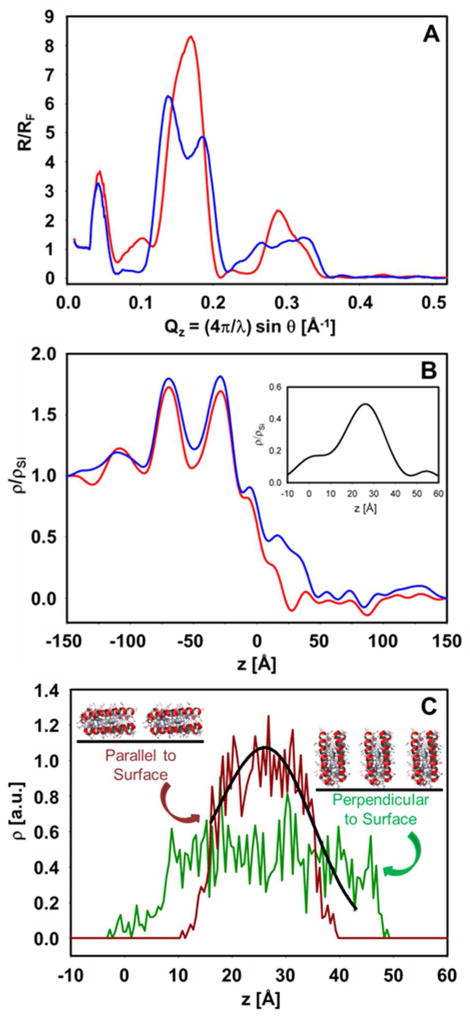Figure 15.
(A) Fresnel-normalized x-ray reflectivity from the alkylated GeSi multilayer substrate reacted with the linker and washed (red) versus that for the same substrate with covalently attached holo-SCRPZ-3 (blue) following washing. (B) Electron density profiles, derived from the normalized reflectivity data via interferometry employing the GeSi multilayer as the reference structure, where the red and blue designations are those from (a). The two maxima from the Ge features in the GeSi multilayer appear for z < 0Å while the features of the moist helium atmosphere appear for z > 50Å in these profiles, the wavelength of the latter fluctuations indicative of the spatial-resolution and their amplitude of the noise-level in the derived profiles. The inset shows the difference electron density profile due to holo-SCRPZ-3 that occurs within 10Å < z < 50Å. This feature appears as a single electron density maximum whose FWHM is ~25Å. (C) Calculated electron density profiles for the design target structure for holo-SCRPZ-3, assuming that the long-axis of the 4-helix bundle is either parallel (brown) or perpendicular (green) to the plane of the self-assembled monolayer. The former is consistent with the experimentally determined profile for holo-SCRPZ-3 within these self-assembled monolayers.

